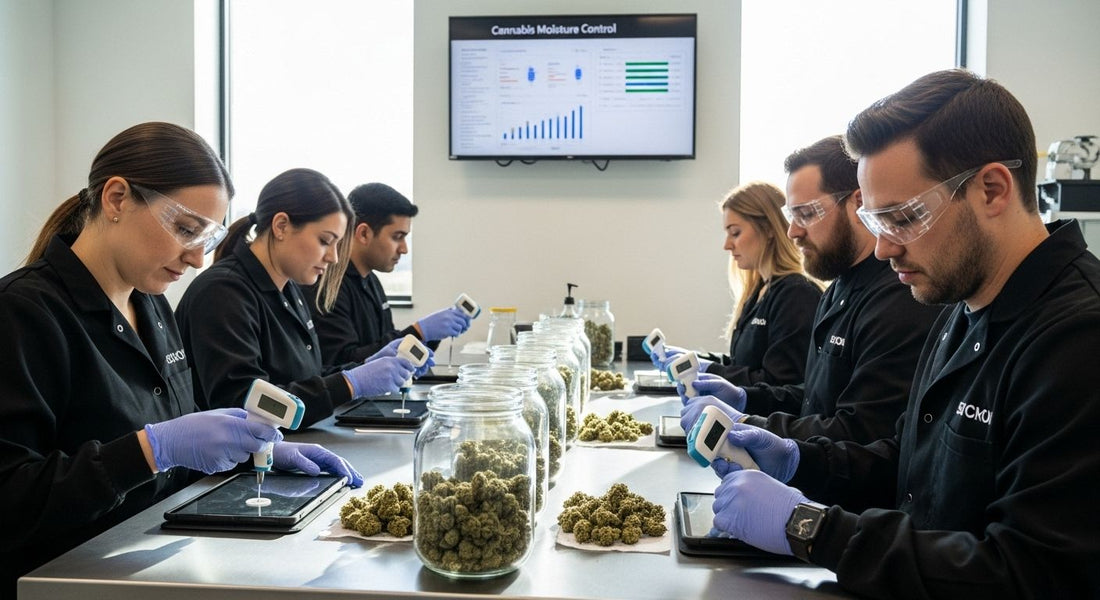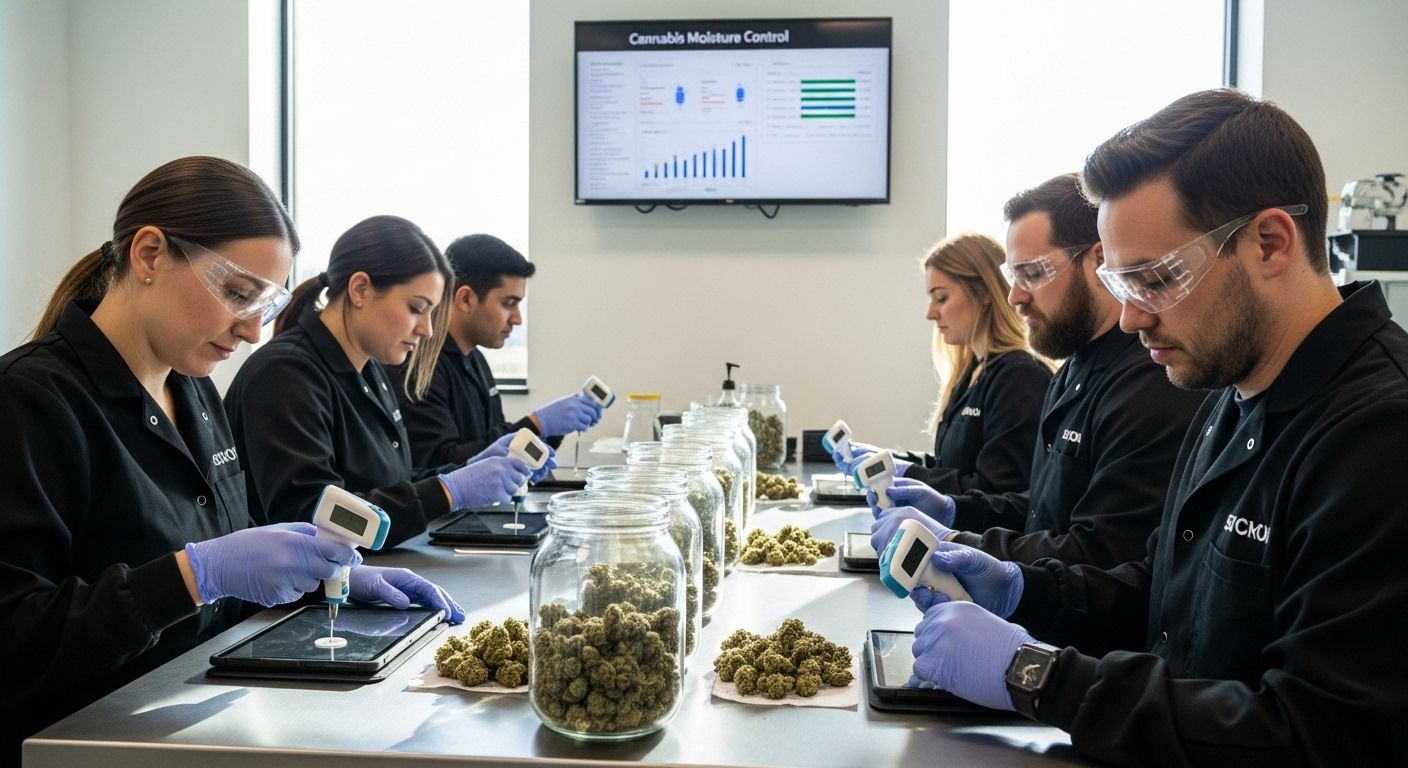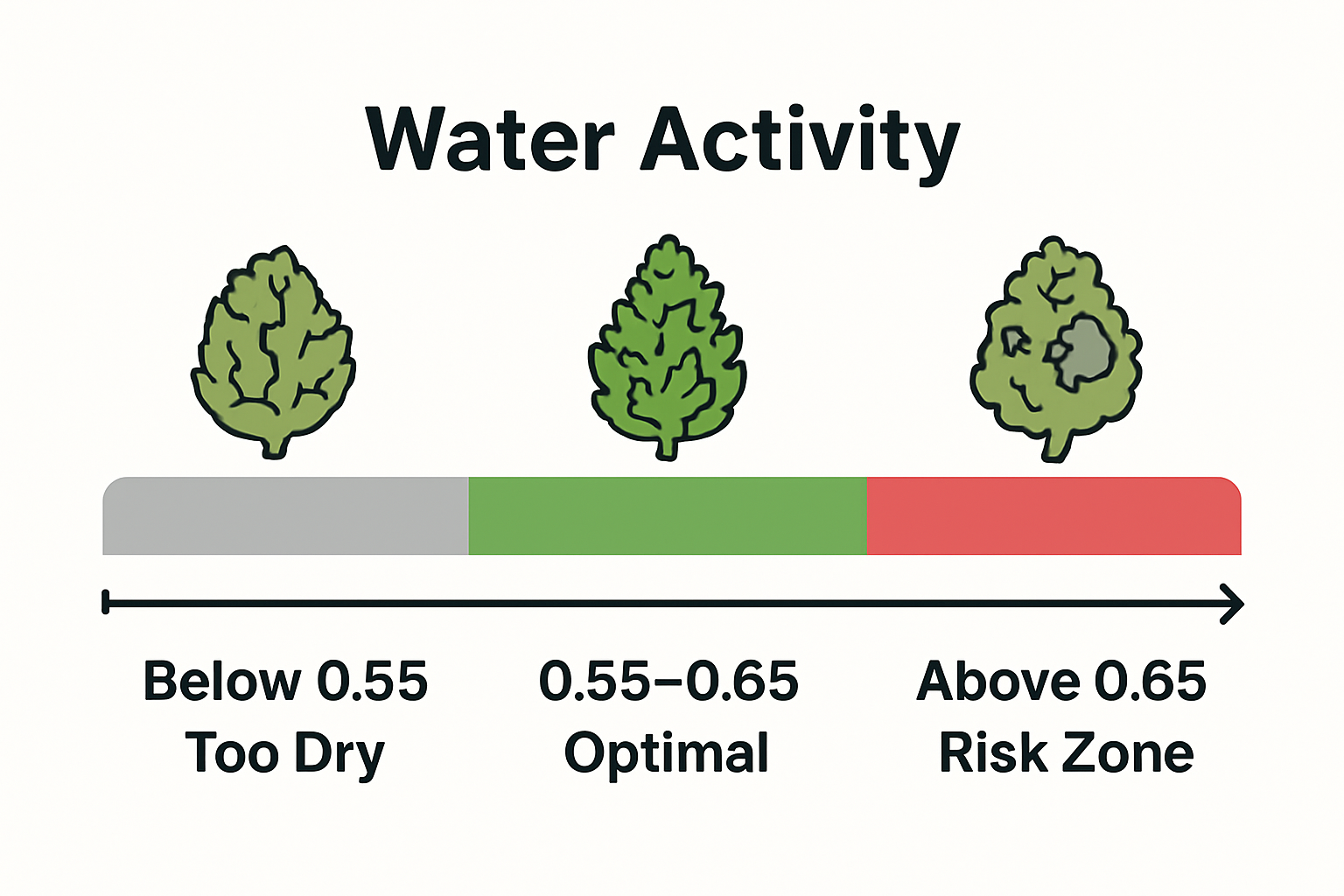Understanding Cannabis Moisture Control: What You Need to Know
Written by California Blendz


Cannabis quality depends on more than just strain or branding. Scientists have found that keeping water activity below 0.7 can almost entirely stop mold from growing on stored flower. Most people pay attention to potency or aroma, ignoring the real impact of moisture control. Turns out, dialing in the right humidity is what truly locks in safety, potency, and flavor for every batch.
Table of Contents
- What Is Cannabis Moisture Control And Why Is It Important?
- The Science Of Moisture: How Humidity Affects Cannabis Quality
- Key Concepts In Moisture Control For Cannabis Storage
- Real-World Applications Of Cannabis Moisture Control Techniques
Quick Summary
| Takeaway | Explanation |
|---|---|
| Control moisture to prevent contamination | Managing moisture levels inhibits fungal and bacterial growth, ensuring the safety of cannabis products. |
| Maintain water activity below 0.65 | Keeping water activity within this range preserves product quality and potency, preventing degradation of cannabinoids. |
| Store in airtight, opaque containers | Proper container choice minimizes external moisture and prevents cannabinoid degradation from light exposure. |
| Monitor temperature and humidity consistently | Stable temperatures between 60-70°F and humidity levels around 55-65% are essential for preserving cannabis quality. |
| Employ precise drying and curing methods | Gradual moisture reduction through controlled dehydration is vital for maintaining the chemical integrity of cannabis. |
What is Cannabis Moisture Control and Why is it Important?
Cannabis moisture control represents a critical scientific process of managing water content in dried cannabis flower to ensure product quality, safety, and preservation. At its core, this technique involves precisely regulating the amount of moisture within cannabis plant material to prevent potential microbial growth, degradation, and contamination.
The Science Behind Moisture Levels
Water activity (aw) is the fundamental metric determining cannabis stability and safety. Scientifically, moisture levels directly impact product integrity by creating environments that can either support or inhibit microbial development. According to research from Frontiers in Microbiology, maintaining water activity below 0.7 prevents most fungal growth, which is crucial for consumer safety.
Key Considerations in Cannabis Moisture Management
Proper moisture control involves several critical aspects that cannabis producers and consumers must understand:
- Preventing Microbial Contamination: Controlling moisture inhibits dangerous fungal and bacterial growth
- Preserving Cannabinoid Potency: Excessive moisture can degrade active compounds like THC and CBD
- Maintaining Product Integrity: Correct moisture levels ensure optimal texture, flavor, and smokability
Regulatory frameworks, such as California’s cannabis testing requirements, mandate strict moisture control standards. These regulations require laboratories to measure water activity, with batches only passing if the level remains ≤ 0.65. For consumers interested in understanding proper storage techniques, our comprehensive guide on cannabis flower preservation offers additional insights.
Understanding cannabis moisture control is not just about technical specifications—it’s about ensuring a safe, high-quality product that delivers consistent performance and protects consumer health.
The Science of Moisture: How Humidity Affects Cannabis Quality
Understanding the intricate relationship between humidity and cannabis quality requires exploring complex scientific interactions between moisture, plant compounds, and environmental conditions. Water activity (aw) emerges as the critical metric determining cannabis stability, acting as a fundamental indicator of potential microbial risks and product degradation.
Water Activity and Molecular Interactions
At the molecular level, water activity represents the energy status of water molecules within cannabis flower. According to research standards from ASTM International, the ideal water activity range for dry cannabis flower sits precisely between 0.55 and 0.65. This narrow window prevents critical issues like mold proliferation while maintaining structural integrity of the plant material.

Environmental Factors Influencing Cannabis Moisture
Multiple environmental variables directly impact cannabis moisture dynamics:
- Temperature: Higher temperatures accelerate moisture evaporation
- Relative Humidity: Ambient humidity dramatically shifts water molecule equilibrium
- Air Circulation: Proper airflow helps regulate moisture distribution
- Storage Conditions: Container type and seal quality significantly influence moisture retention
Technical precision matters immensely in moisture management. Slight deviations can trigger cascading effects on cannabinoid potency, terpene preservation, and overall product quality. For cannabis enthusiasts seeking advanced storage techniques, our comprehensive guide to flower preservation offers deeper insights into maintaining optimal moisture levels.
To clarify the key scientific factors that affect cannabis moisture control, the following table summarizes the main environmental variables and their impact on cannabis quality.
| Factor | Influence on Cannabis Moisture | Impact on Product Quality |
|---|---|---|
| Temperature | Affects rate of moisture evaporation | Can speed up drying or cause overdrying |
| Relative Humidity | Alters water molecule equilibrium | Controls risk of mold and quality loss |
| Air Circulation | Regulates moisture distribution | Helps prevent uneven drying/curing |
| Storage Conditions | Container type and seal affect moisture | Improves or reduces product preservation |
| Light Exposure | UV can degrade cannabinoids | Reduces potency and changes flavor |
The science of cannabis moisture control transcends simple hydration management—it represents a sophisticated interplay of chemistry, physics, and biological preservation, ultimately determining the safety, potency, and sensory experience of the final product.
Key Concepts in Moisture Control for Cannabis Storage
Moisture control in cannabis storage represents a sophisticated scientific approach requiring precise environmental management and understanding of complex molecular interactions. Effective storage strategies go far beyond simple containment, demanding nuanced comprehension of how humidity, temperature, and container properties interact to preserve cannabis quality.
Understanding Storage Environment Dynamics
The storage environment serves as a critical determinant of cannabis preservation. Research from the FDA emphasizes that water activity measurement requires extremely precise temperature control, where even a 0.1°C variation can significantly alter moisture equilibrium. This microscopic sensitivity underscores the complexity of maintaining optimal storage conditions.
Critical Factors in Cannabis Moisture Preservation
Several fundamental elements directly influence cannabis moisture stability:
- Container Selection: Airtight, opaque containers minimize external moisture exchange
- Temperature Consistency: Stable environments between 60-70°F prevent moisture fluctuations
- Humidity Control: Maintaining 55-65% relative humidity prevents mold and preserves terpene profiles
- Light Exposure: Minimizing UV radiation helps prevent cannabinoid degradation
Professional cannabis storage demands meticulous attention to these variables. For enthusiasts seeking advanced preservation techniques, our comprehensive storage guide offers in-depth strategies for maintaining flower quality.
Ultimately, cannabis moisture control transcends simple preservation—it represents a delicate balance of scientific principles aimed at protecting the plant’s intrinsic chemical composition, ensuring consumers receive a product that maintains its original potency, flavor, and therapeutic potential.
For a quick reference, this table compares the most critical cannabis moisture control parameters, their recommended values, and the reasons they matter for both producers and consumers.
| Parameter | Recommended Range/Value | Why It Matters |
|---|---|---|
| Water Activity (aw) | 0.55 - 0.65 | Prevents mold, preserves cannabinoids |
| Relative Humidity | 55% - 65% | Maintains texture, prevents microbial contamination |
| Storage Temperature | 60 - 70°F | Avoids degradation and moisture fluctuations |
| Container Type | Airtight, opaque | Reduces light/moisture exposure, preserves quality |
| Light Exposure | Minimized/none | Prevents breakdown of THCa, CBD, and terpenes |

Real-World Applications of Cannabis Moisture Control Techniques
Effective moisture control transforms cannabis quality from theoretical concept to practical reality, bridging scientific understanding with tangible preservation strategies. Professional cultivators and consumers alike rely on sophisticated techniques that protect cannabis potency, safety, and sensory characteristics throughout its lifecycle.
Precision Drying and Curing Protocols
Research from Washington State’s regulatory framework demonstrates how precise moisture management becomes a legal requirement, mandating water activity levels at or below 0.65 for commercial cannabis products. This scientific standard transforms moisture control from an optional practice into a critical quality assurance mechanism, ensuring consumer safety and product consistency.
Strategic Moisture Management Techniques
Professional cannabis preservation involves multiple interconnected strategies:
- Controlled Dehydration: Gradual moisture reduction prevents rapid chemical degradation
- Environmental Monitoring: Continuous tracking of temperature and humidity levels
- Advanced Storage Solutions: Using specialized containers that minimize external moisture exchange
- Periodic Quality Verification: Regular testing to confirm moisture stability
For cannabis enthusiasts seeking advanced storage solutions, our comprehensive moisture preservation guide offers expert insights into maintaining flower quality across different storage scenarios.
Ultimately, real-world moisture control transcends technical specifications. It represents a holistic approach to preserving cannabis’s intricate chemical profile, protecting the delicate balance of cannabinoids, terpenes, and overall product integrity through scientifically informed, precision-driven techniques.
Experience Absolute Freshness: Elevate Your Cannabis with Precision Moisture Control
Struggling with dry, brittle buds or worrying about mold ruining your stash? The article “Understanding Cannabis Moisture Control: What You Need to Know” highlights how crucial moisture management is for keeping your cannabis safe, potent, and bursting with flavor. California Blendz takes these concerns seriously by offering expertly cured, lab-tested flower varieties. Our THCa 50/50 Hybrid collection is crafted to maintain ideal water activity, protecting terpenes and cannabinoids just like science recommends. See why carefully regulated moisture matters to every connoisseur or wellness seeker.

Ready to experience cannabis cultivated for lasting quality and purity? Explore all our curated selections with confidence on California Blendz. For collectors and enthusiasts seeking limited-edition excellence, make sure to browse The THCa Flower Collection. Secure your next order now and enjoy true peace of mind knowing your flower is preserved at its peak.
Frequently Asked Questions
What is cannabis moisture control?
Cannabis moisture control is the scientific process of managing water content in dried cannabis flower to ensure product quality, safety, and preservation. This involves regulating moisture levels to prevent microbial growth and degradation.
Why is water activity (aw) important for cannabis?
Water activity (aw) is crucial as it determines the stability and safety of cannabis. Keeping aw below 0.7 helps prevent fungal growth, which is essential for consumer safety and preserving the integrity of the product.
How can I maintain proper moisture levels in cannabis storage?
To maintain proper moisture levels, use airtight, opaque containers, ensure consistent temperatures between 60-70°F, control humidity to 55-65%, and minimize light exposure to prevent cannabinoid degradation.
What are the consequences of improper moisture control in cannabis?
Improper moisture control can lead to microbial contamination, degradation of cannabinoids like THC and CBD, and a loss of flavor and texture in the final product, ultimately compromising quality and safety.








